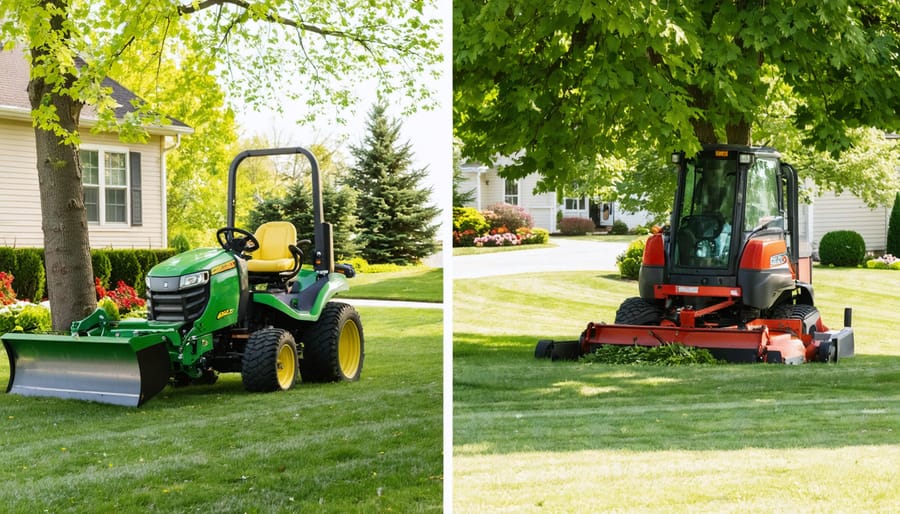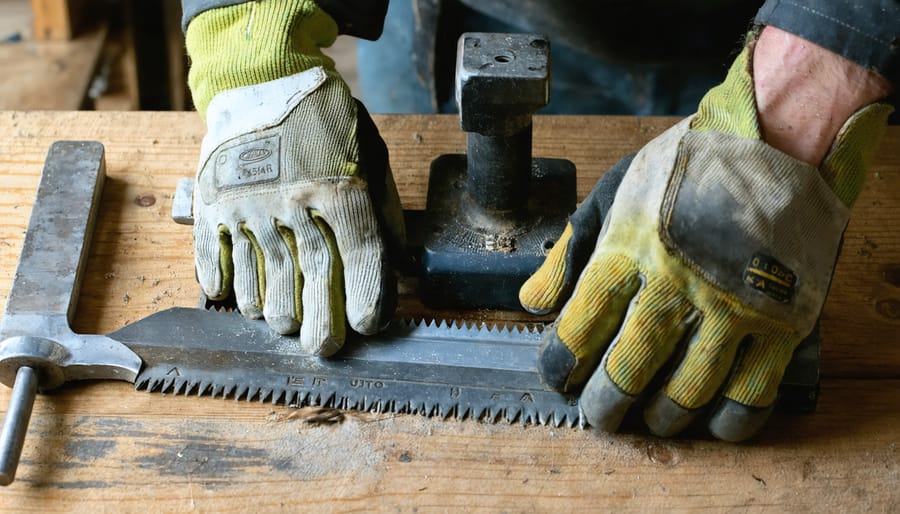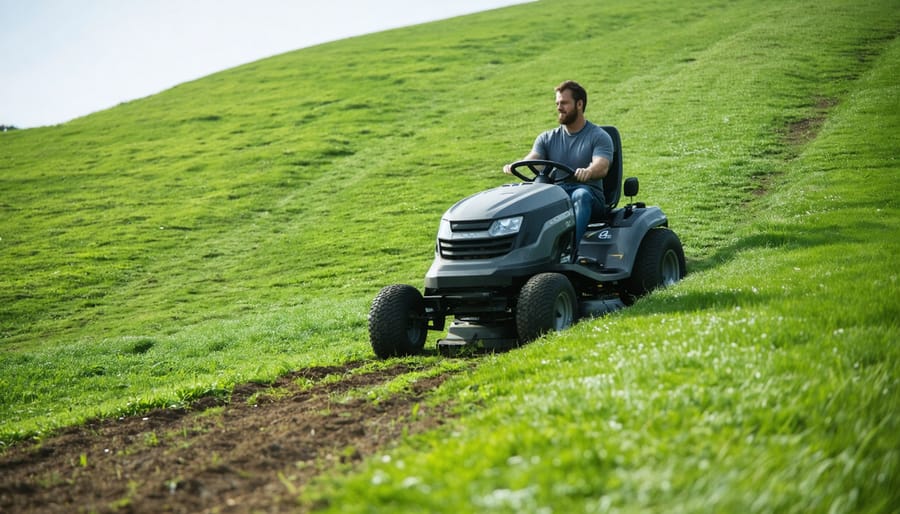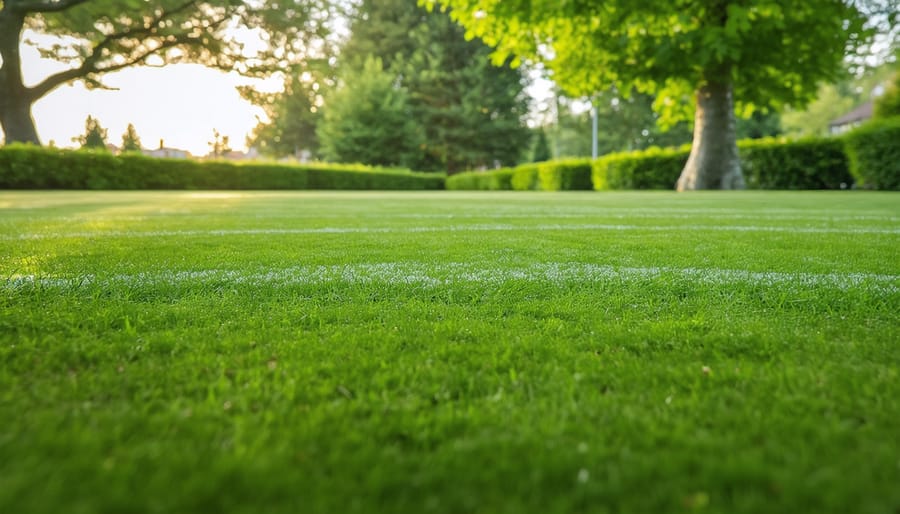When choosing between a lawn tractor and a zero-turn mower, the decision impacts everything from cutting precision to long-term maintenance costs. These powerful yard machines represent two distinct approaches to maintaining larger properties, each offering unique advantages for specific lawn care scenarios. Lawn tractors excel in versatility and traditional ease of use, making them ideal for properties with slopes and multiple landscaping needs. Zero-turn mowers, with their superior maneuverability and faster cutting speeds, have revolutionized professional-grade lawn maintenance for flat, obstacle-rich yards.
For homeowners maintaining properties between 1/2 acre and 4 acres, this choice becomes particularly crucial. While both options effectively tackle substantial lawns, their differences in turning radius, cutting pattern efficiency, and attachment compatibility can significantly impact your mowing experience and maintenance routine. Understanding these distinctions helps ensure your investment aligns perfectly with your property’s specific demands and your comfort level with different mowing technologies.
Before diving into the detailed comparison, consider this: the right choice depends not just on your lawn’s size, but also on its terrain, obstacles, and your desired maintenance goals. Whether you prioritize versatility, speed, or comfort, this comprehensive guide will help you navigate the key differences between these popular mowing solutions.
Understanding Lawn Tractors: The Traditional Powerhouse
Key Features and Design
When exploring your mowing options, understanding the fundamental design differences between these two machines is crucial. Traditional entry-level lawn tractors feature a familiar car-like design with a front-mounted engine, steering wheel, and forward-facing seat. This layout makes them instantly familiar to most users, with controls that feel natural if you’ve ever driven a car.
The steering system on lawn tractors uses a traditional wheel that controls the front wheels, typically offering a turning radius between 15 to 20 inches. They’re built with a sturdy frame that supports the deck beneath the machine, with the cutting blades mounted under the rider’s seat. Most models feature a foot-operated hydrostatic transmission, making speed control intuitive and comfortable.
In contrast, zero-turn mowers employ a radically different design philosophy. They feature two lap bars or levers instead of a steering wheel, controlling independent hydrostatic transmissions for each rear wheel. The engine is typically mounted in the rear, improving visibility and weight distribution. The cutting deck is positioned at the front of the machine, allowing for better monitoring of your cutting path.
These design choices result in distinct handling characteristics – lawn tractors offer stable, predictable operation on various terrains, while zero-turns provide unmatched maneuverability around obstacles and tight spaces.
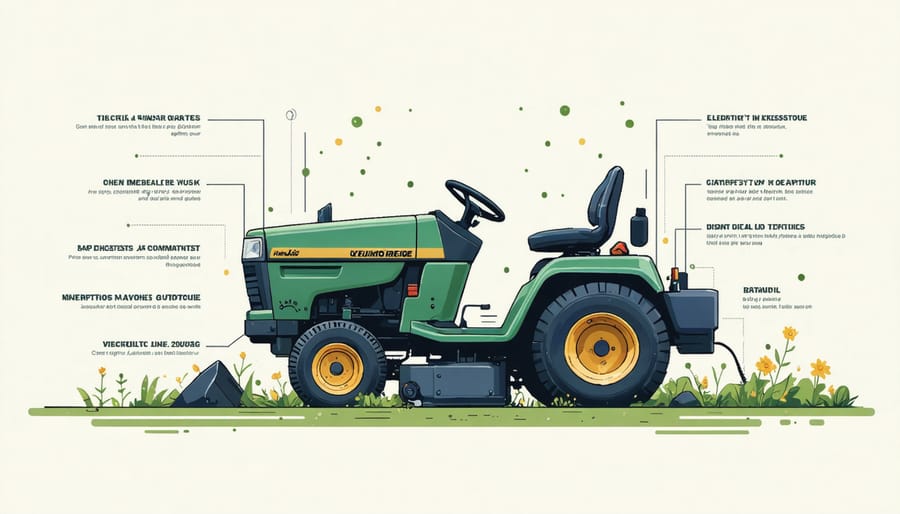
Versatility Beyond Mowing
When it comes to year-round utility, lawn tractor versatility truly shines. These machines can transform into multi-purpose workhorses with an impressive array of attachments. From snow blowers and plows for winter maintenance to spreaders, aerators, and dethatchers for seasonal lawn care, lawn tractors accept a wide range of implements that expand their functionality beyond simple mowing.
Zero-turn mowers, while excellent at their primary task, typically offer fewer attachment options. However, many modern zero-turns now accommodate bagging systems, mulching kits, and some even support light-duty towing capabilities. Some manufacturers have introduced innovative accessories specifically designed for zero-turns, though these options remain more limited compared to traditional lawn tractors.
For homeowners who need to handle multiple property maintenance tasks throughout the year, this versatility factor becomes crucial. A lawn tractor can pull a cart loaded with gardening supplies, spread fertilizer in spring, and clear snow in winter. The front-mounted attachments are particularly useful for tasks requiring precise control and visibility.
Consider your property’s year-round maintenance needs when making your choice. If you primarily focus on lawn mowing during the growing season, a zero-turn’s specialized design might be ideal. However, if you’re looking for a machine that can tackle various landscaping and maintenance tasks across all seasons, a lawn tractor’s adaptability could provide better value for your investment.
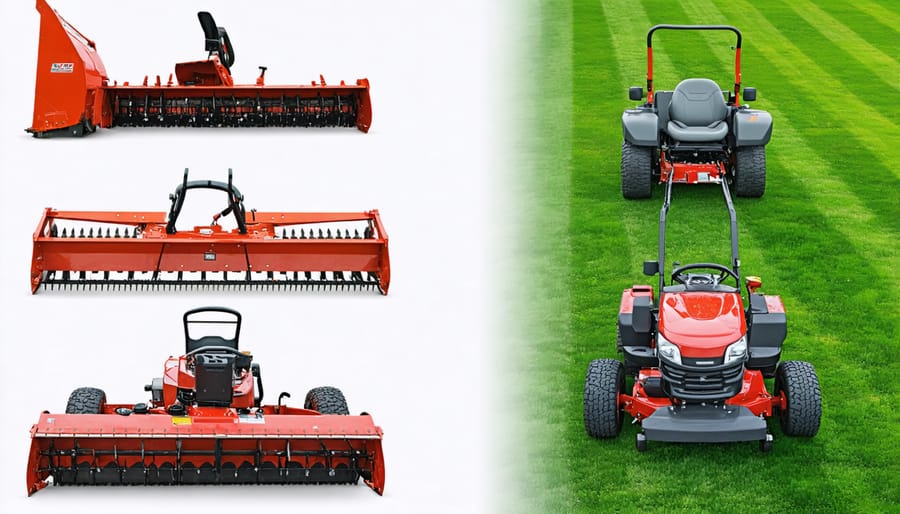
Zero Turn Mowers: The Maneuverability Champion
Zero Turn Technology Explained
Zero turn technology revolutionized lawn mowing by introducing a uniquely efficient steering system that allows the mower to pivot 360 degrees on its own axis. Unlike traditional lawn tractors, zero turn mowers utilize independent hydraulic controls for each rear wheel, allowing them to rotate in opposite directions. This innovative design creates the zero turn maneuverability features that make these machines so effective.
The system works through two lap bars (or steering levers) that control the speed and direction of each rear wheel independently. Push both bars forward, and the mower moves straight ahead. Pull one back while pushing the other forward, and the mower pivots smoothly around its axis. This precise control enables operators to navigate around obstacles, trim close to landscaping features, and make quick directional changes without the wide turning radius required by traditional steering wheels.
This technology offers several key advantages. First, it significantly reduces mowing time by eliminating the need for multiple passes around obstacles or three-point turns at the end of each row. Second, it provides exceptional precision for creating clean, professional-looking stripes and patterns. Finally, the ability to turn on a dime means less damage to your lawn from tire tracks and skid marks, promoting healthier grass growth.
The learning curve might be steeper than with a traditional steering wheel, but most users master the controls within a few mowing sessions.
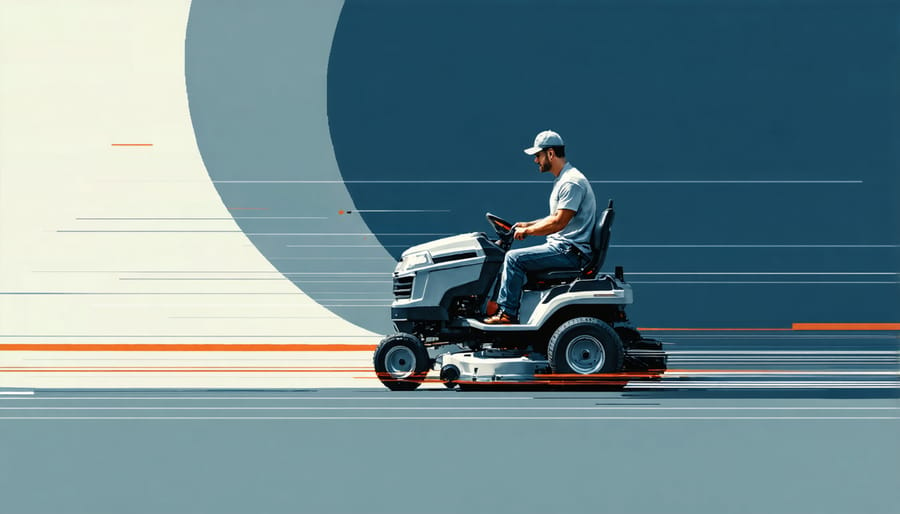
Speed and Precision Benefits
When it comes to getting your lawn mowed efficiently, zero turn mower performance typically outshines traditional lawn tractors in both speed and precision. Zero-turn mowers can complete the same cutting job in roughly half the time, thanks to their ability to make 180-degree turns without requiring multiple-point turns or wide sweeping arcs.
The precision advantage becomes particularly evident when mowing around obstacles like trees, flower beds, and garden features. Zero-turn mowers can pivot on the spot and maneuver tight spaces with impressive accuracy, eliminating the need for additional trimming work. Their responsive controls allow operators to adjust cutting paths instantly, resulting in cleaner, more professional-looking results.
However, lawn tractors aren’t without their merits in this department. Their familiar steering wheel design often provides better stability and more predictable cutting patterns, especially on gentle slopes. This can be particularly beneficial for beginners or those who prefer a more traditional approach to mowing.
The cutting deck design also plays a crucial role in precision. Many modern zero-turns feature floating decks that better follow ground contours, while lawn tractors typically maintain a more rigid cutting height. This difference can be especially noticeable when mowing uneven terrain, where zero-turns often deliver a more consistent cut across the entire lawn surface.
Performance Face-Off: Making Your Choice
Terrain Handling
When it comes to handling different terrains, both lawn tractors and zero-turn mowers have their strengths. Lawn tractors excel on gentle to moderate slopes, offering better stability and traction thanks to their traditional wheel configuration. Their longer wheelbase provides confident operation on hills up to 15 degrees, making them a safer choice for properties with varying elevations.
Zero-turn mowers, while incredibly maneuverable on flat terrain, can be challenging on steeper slopes. They perform best on level ground where their superior turning ability shines, but operators should exercise caution on hills steeper than 10 degrees. However, they excel at navigating around obstacles like trees, flower beds, and landscape features with precision that lawn tractors can’t match.
For uneven or bumpy terrain, lawn tractors typically offer a smoother ride due to their suspension systems and larger front wheels. Zero-turn models, while improving with newer designs, may provide a slightly bumpier experience on rough ground. If your property includes both flat areas and slopes, consider how much of each terrain type you’ll need to mow when making your choice.
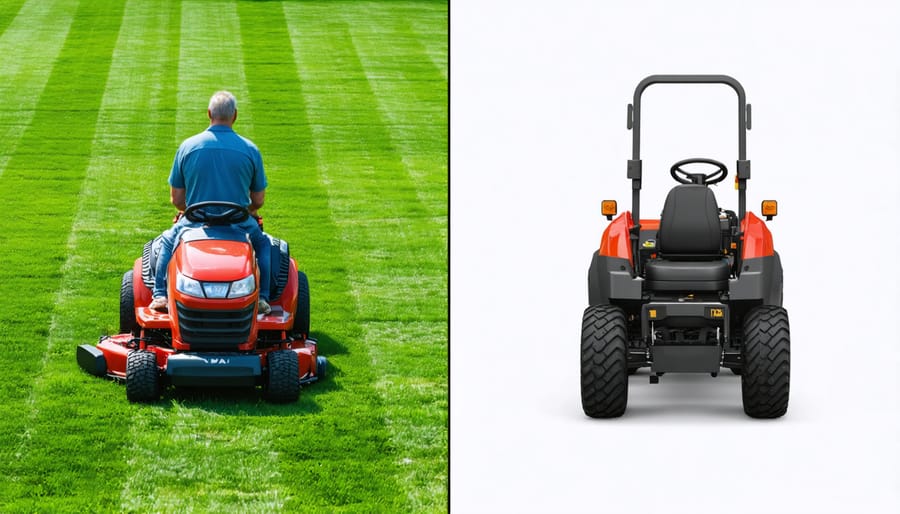
Maintenance and Longevity
Both lawn tractors and zero-turn mowers require regular maintenance to ensure optimal performance and longevity. Lawn tractors typically have simpler mechanical systems, making basic maintenance tasks more straightforward for DIY-minded owners. Their traditional design often means parts are readily available and repairs are generally less expensive.
Zero-turn mowers, while featuring more complex hydraulic systems and sophisticated riding comfort features, may require more specialized maintenance. However, their commercial-grade components are built to withstand heavy use, potentially offering better durability in the long run.
For both types, key maintenance tasks include regular oil changes, blade sharpening, and belt inspections. Zero-turns typically need additional attention to their hydraulic systems and steering components. When properly maintained, both machines can last 10-15 years or more, though zero-turns often show better resilience under heavy commercial use.
The choice between the two often comes down to your comfort with maintenance tasks and access to local repair services. If you’re mechanically inclined and prefer doing your own maintenance, a lawn tractor might be the more practical choice.
Cost Considerations
When comparing lawn tractors and zero-turn mowers, cost considerations play a significant role in the decision-making process. Generally, zero-turn mowers command a higher initial price tag, with entry-level models starting around $2,500 and premium versions exceeding $6,000. Lawn tractors, on the other hand, typically start at about $1,500, with high-end models reaching $3,000 to $4,000.
However, the initial purchase price is just one piece of the financial puzzle. Operating costs include fuel consumption, maintenance, and replacement parts. Zero-turn mowers often prove more fuel-efficient due to their faster mowing speeds and reduced operation time. They typically require less fuel per acre mowed compared to lawn tractors.
Maintenance costs can vary between the two types. Zero-turn mowers have more sophisticated hydraulic systems that may require professional servicing, potentially increasing long-term maintenance expenses. Lawn tractors generally have simpler mechanisms, making them easier and often cheaper to maintain for DIY-minded owners.
When considering long-term value, factor in the time savings that zero-turn mowers offer. Their superior maneuverability and faster cutting speeds can reduce mowing time by up to 50%, which translates to significant labor cost savings for professionals or valuable time saved for homeowners.
Resale value tends to favor zero-turn mowers, as they typically retain their value better than lawn tractors. However, this advantage depends largely on proper maintenance and care of the equipment. Both types can provide excellent long-term value when properly maintained and matched to appropriate property sizes and terrain types.
Choosing between a lawn tractor and a zero-turn mower ultimately comes down to your specific needs, property characteristics, and personal preferences. For homeowners with smaller to medium-sized lawns (up to 2 acres) and various landscaping features to navigate around, a zero-turn mower offers superior maneuverability and time-saving benefits. They’re particularly ideal for properties with numerous trees, flower beds, or irregular shapes.
However, if you’re maintaining a larger property with gentle slopes, or you need a machine that can handle multiple tasks beyond mowing, a lawn tractor might be your better choice. Their versatility in accepting attachments for tasks like hauling, tilling, or snow removal makes them excellent all-season workhorses.
Budget-conscious buyers should consider that while zero-turn mowers typically cost more upfront, they can save time and money in the long run through increased efficiency and reduced mowing time. Lawn tractors, meanwhile, offer better value if you’ll be using attachments frequently.
For beginners or those less confident with power equipment, lawn tractors tend to have a gentler learning curve. Zero-turn mowers, while highly efficient, require some practice to master their unique steering system.
Remember that both options can be environmentally friendly choices when properly maintained and operated. Consider electric models if available in your area, and always follow sustainable lawn care practices regardless of which machine you choose.
